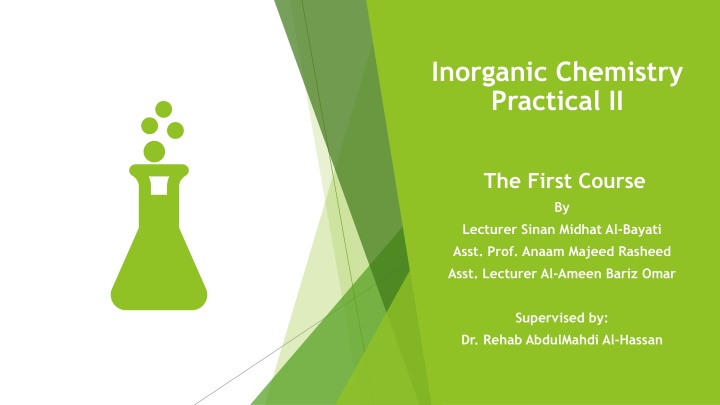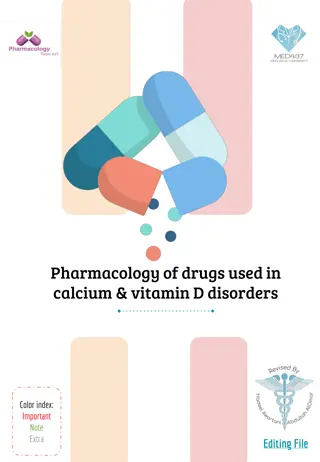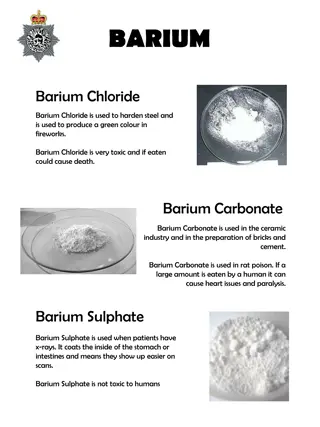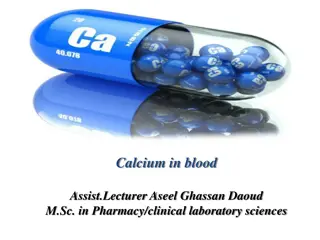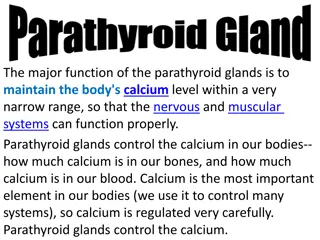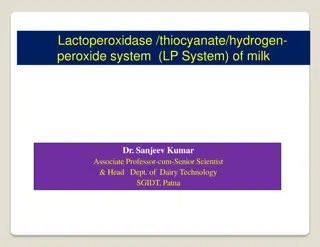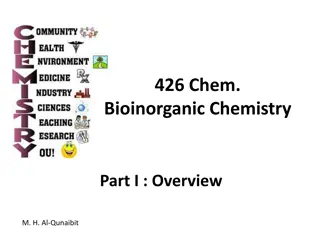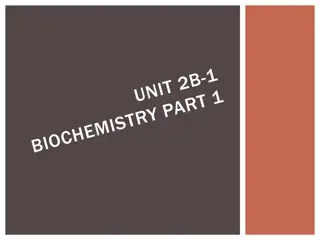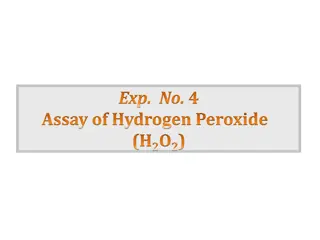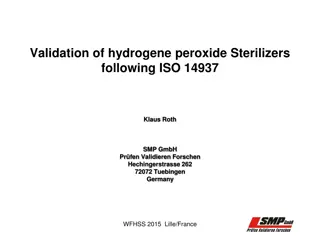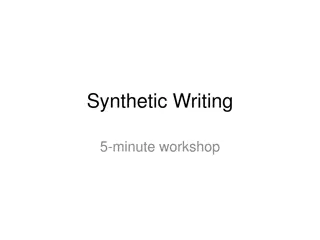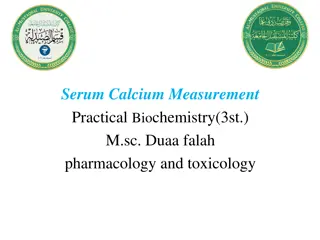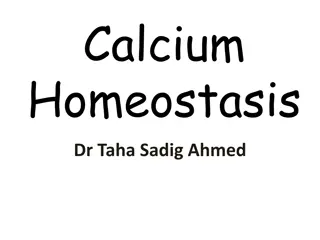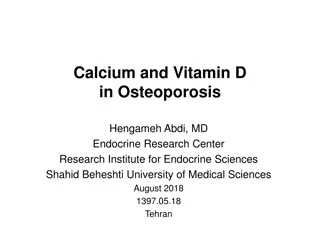Preparation of Calcium Peroxide (CaO2) in Inorganic Chemistry Practical II
This practical experiment details the preparation of calcium peroxide, a solid peroxide used in various industries and agriculture. The procedure involves the reaction of calcium salt and sodium peroxide to synthesize calcium peroxide, which has applications in agriculture, aquaculture, ecological restoration, and food additives. The experiment includes steps for crystallization and purification, with reagents like calcium carbonate, conc. HCl, hydrogen peroxide, and ammonia solution used. The post-reaction process involves filtering, washing, and drying the obtained calcium peroxide crystals, followed by calculating the yield percentage and discussing related questions on the experiment.
Uploaded on Oct 08, 2024 | 5 Views
Download Presentation

Please find below an Image/Link to download the presentation.
The content on the website is provided AS IS for your information and personal use only. It may not be sold, licensed, or shared on other websites without obtaining consent from the author.If you encounter any issues during the download, it is possible that the publisher has removed the file from their server.
You are allowed to download the files provided on this website for personal or commercial use, subject to the condition that they are used lawfully. All files are the property of their respective owners.
The content on the website is provided AS IS for your information and personal use only. It may not be sold, licensed, or shared on other websites without obtaining consent from the author.
E N D
Presentation Transcript
Inorganic Chemistry Practical II The First Course By Lecturer Sinan Midhat Al-Bayati Asst. Prof. Anaam Majeed Rasheed Asst. Lecturer Al-Ameen Bariz Omar Supervised by: Dr. Rehab AbdulMahdi Al-Hassan
Experiment No. (8) Preparation of Calcium Peroxide CaO2 Preparation of Calcium Peroxide CaO2 Calcium peroxide or Calcium dioxide (CaO2) is a solid peroxide with a white or yellowish color. For all practical purposes calcium peroxide is insoluble in water but it can dissolve in acid to form hydrogen peroxide. When in contact with water it will immediately begin to decompose releasing oxygen. Preparation: Calcium peroxide is created by the interactions of solutions of calcium salt and sodium peroxide, with subsequent crystallization.The octahydrate is synthesized by the reaction of calcium hydroxide with dilute hydrogen peroxide.
Applications: Calcium peroxide is manufactured to varying specifications and purity and can be used in different areas of industry and agriculture. In agriculture, it is used as an oxygenfertilizer, and is also used in the presowing treatments of rice seeds. Also, calcium peroxide has uses in the aquaculture industry as it is used to oxygenate and disinfect water, and in the ecological restoration industry as it is used in the treatment of soils. Calcium Peroxide is used in a similar manner of magnesium peroxide for environmental restoration programs. It is used to restore soil and groundwater contaminated with petroleum hydrocarbons by stimulating aerobic microbial degradation of the contaminants in a process known as Enhanced In-Situ Bioremediation. As a food additive it has the E number E930 and is used as flour bleaching agent and improving agent.
The Required Reagents: 1.Calcium carbonate CaCO3 (0.5 g). 2.Conc. HCl (2 ml). 3.Hydrogen peroxide (4 ml). 4.Conc. Ammonia. 5.Distilled water. Procedure: 1)Mix in a beaker (2 ml) of distilled water with (2 ml) of conc. HCl, and cover the beaker with a watch glass. 2)Add 0.5 g) of calcium carbonate in a small potions. 3)Boil the mixture to expel the produced carbon dioxide, then add (0.5 g) of calcium carbonate until remains dissolved. 4)Filter the hot solution, then cool the filtrate down, and complete its volume to (2 ml) distilled water. 5)Cool the solution in ice-bath, then add (4 ml) of H2O2 60%. 6)Prepare (10 ml) of solution of dilute ammonia by adding (8 ml) of distilled water, and (2 ml) of conc. Ammonia, then add this solution to the solution mixture of calcium chloride-hydrogen peroxide and stir until calcium peroxide is crystalized. 7)Collect the crystals by filteration then wash it with cold water and dry it in room temperature. 8)Calculate the percentage of the yield. ?????????2 ? ?? ???????? 100 ????? % =
Questions: Write the equation of this reaction. Why conc. HCl is used in this experiment? Why ammonia solution is used? Calculate the theory mass of calcium peroxide.
The Third Group III B (B) Elements Symbol Electronic structure Boron 2[H] 2s2 2p1 5B Aluminum 10[Ne] 3s2 3p1 13Al Gallium 18[Ar] 3d10 4s2 4p1 31Ga Indium 36[Kr] 4d10 5s2 5p1 49In Thallium 54[Xe] 4F14 5d10 6s2 6p1 81Tl
Questions: The oxidation state of (+1) can be more stable from B Tl, why? The elements are more ionic from B Tl, why? The elements are more metallic from B Tl, why? Give the reason for electronically of these elements subdivided into two classes. Write down the electronic structure of Thallium?
